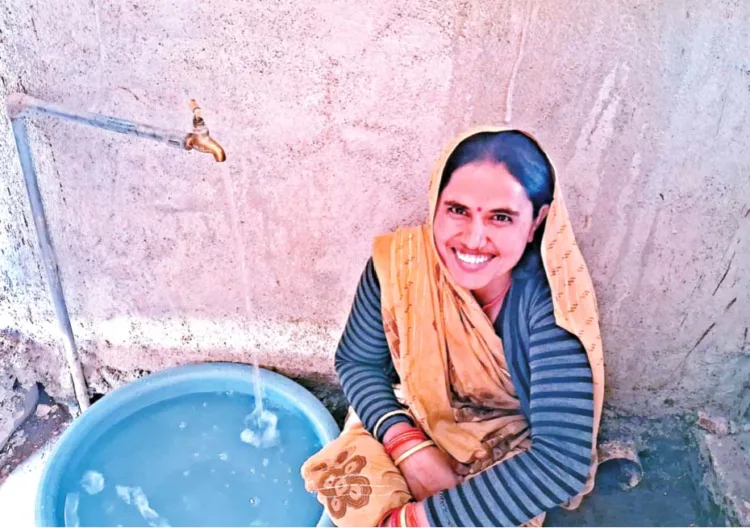The Jal Jeevan Mission (JJM), launched on August 15, 2019, stands as one of India’s most ambitious social infrastructure programs. Intending to provide tap water to every rural household across the nation, the mission targets 19.34 crore households by 2024. At its inception, a mere 3.23 crore households (17 per cent) had access to tap water, leaving a significant gap of 16.10 crore households to be covered.
Significant achievements as of October 2024
As of October 10, 2024, the JJM has achieved remarkable progress, successfully providing tap water connections to an additional 11.96 crore households. This brings the total number of covered households to over 15.20 crore, accounting for 78.62 per cent of all rural households in India. This milestone represents a significant leap in addressing one of the fundamental needs of rural populations—access to potable water within their homes.
The estimated financial outlay for the mission is Rs 3.60 lakh crore, with Rs 2.08 lakh crore contributed by the central government and Rs 1.52 lakh crore by state governments. This monumental investment underlines the government’s commitment to sustainable development and the well-being of rural citizens.
Empowering rural women
The Jal Jeevan Mission is not just about water—it is driving a quiet social revolution. A study by SBI Research highlights the profound impact of this initiative on the lives of rural women. The report reveals that an 8.3 percentage point decline in the percentage of households fetching water from outside their premises correlates with a 7.4 percentage point increase in the participation of women in agriculture and allied activities.
State-wise data indicates that in most regions, reduced time spent fetching water has significantly contributed to increased labour force participation among women. For instance, states like Bihar, Uttar Pradesh, and West Bengal have seen marked improvements in women’s involvement in agricultural work.
Key state-wise insights
- Bihar: A 1.5 per cent reduction in households fetching water has coincided with a remarkable 28.5 per cent increase in female agricultural participation.
- Assam: A 1.7 per cent reduction in households fetching water resulted in a 29 per cent increase in female workforce participation.
- Madhya Pradesh: A 17.6 per cent reduction in fetching water outside premises saw a 4.5 per cent increase in women’s participation.
Conversely, states like Goa and Telangana, where water-fetching distances were already low, showed limited or negative changes in women’s workforce participation, emphasizing the importance of addressing initial disparities in access.
New era for rural India
The Jal Jeevan Mission is not merely a scheme; it is a transformative force reshaping the socio-economic fabric of rural India. By reducing the drudgery associated with fetching water, it is freeing women to pursue educational, economic, and social opportunities, thereby empowering entire communities.
The government’s sustained focus on improving rural infrastructure, coupled with innovative implementation strategies, has set a benchmark for future public welfare programs. With more than 15 crore households already benefiting and the remaining goal in sight, the mission is a testament to the power of targeted policy and execution in achieving inclusive development.




















Comments